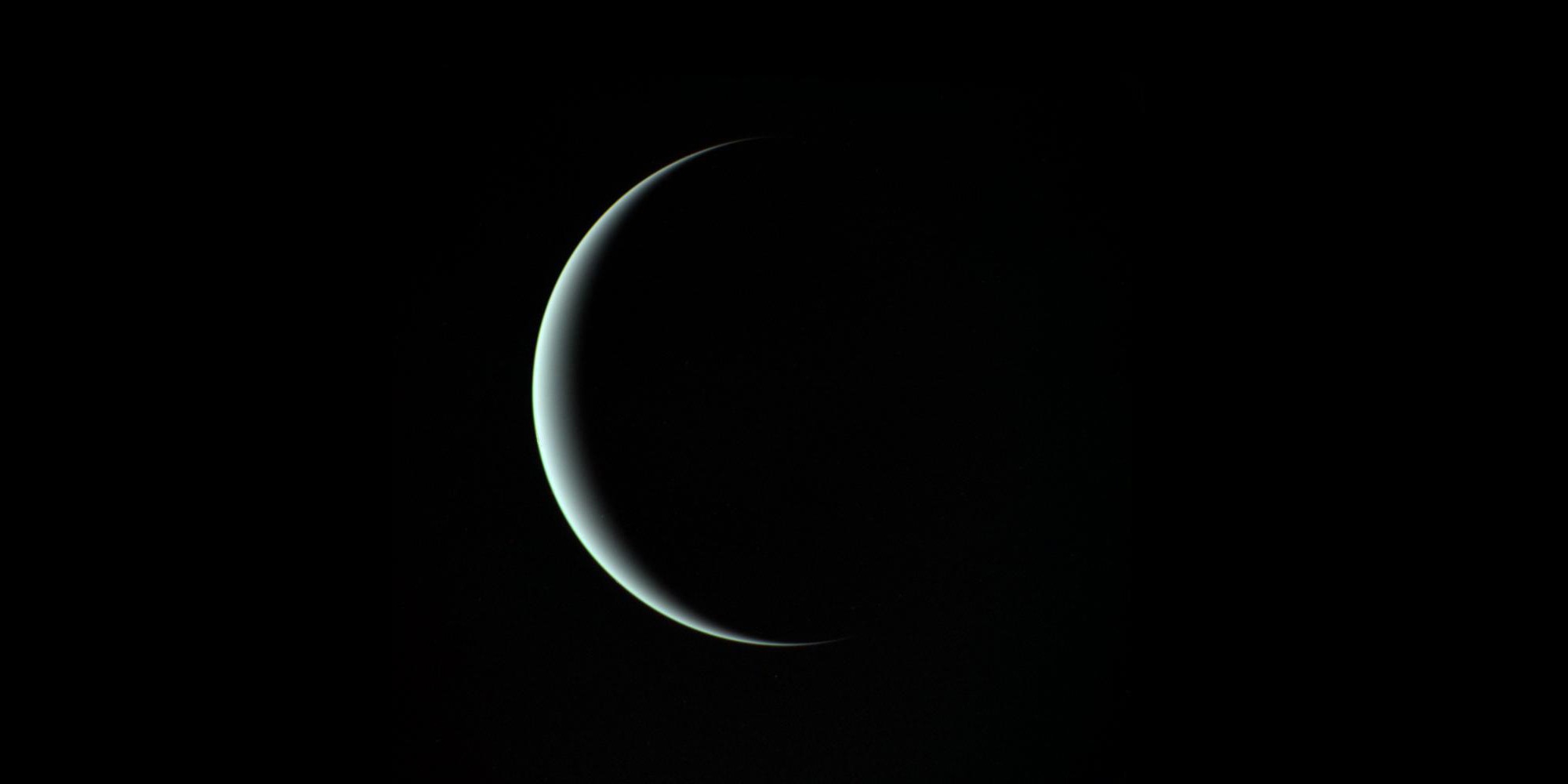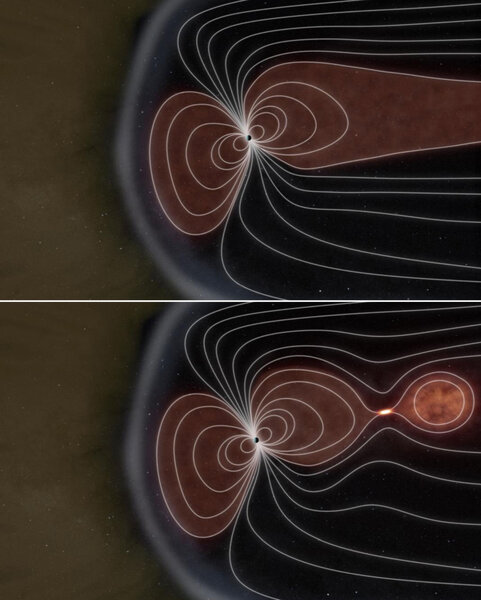Create a free profile to get unlimited access to exclusive videos, sweepstakes, and more!
Might as well just say it: Uranus is leaking gas into space

[NB: I know. I know. I swore to myself that I wouldn't make a Uranus joke ever again, because first of all it's tired, and second they're done. Tapped out. The last truly funny Uranus joke was done in 1999. And I dithered over writing about this bit of news at all, but the fact is it's an interesting story, and more evidence we should strongly consider sending a new mission to Uranus and Neptune.
And if you're curious, I pronounce it "YURE-in-us," though perhaps "oo-RAN-us" may be more accurate historically.]
Every planet in the solar system (except Venus) has a magnetic field. They vary in complexity and how they're generated, but each affects the space surrounding the planet.
One of the biggest impacts they have is acting like a shield, protecting the planet from the solar wind, the fierce flow of subatomic particles from the Sun. Over billions of years this wind can sandblast a planet. Mars once had a thick atmosphere and surface water, but its weak magnetic field left it essentially unprotected; over the eons the solar wind has literally eroded away the Martian atmosphere, leaving the dry, thin-aired planet we see today.
But in some cases the opposite is true. As the solar wind blows past the planet, the magnetic field gets compressed on the sunward side of the planet and trails behind "downstream" on the other side, like water flowing around a sandbar. In recent years planetary scientists have learned that atoms from planetary atmospheres can get caught up in the planet's magnetic field, which can then get trapped in a magnetic bubble called a plasmoid. This plasmoid bubble can detach and flow downstream as well, leaving the planet entirely.
It's another way planets can lose air. It works way more slowly than simply losing the air due to direct solar wind erosion, but it does happen.
And now scientists have discovered it happens at Uranus, too.
In January 1986, the Voyager 2 spacecraft flew past Uranus, taking incredible images of the distant giant. It discovered new moons, new rings, and took measurements of the planet itself. As it passed, it flew through the planet's magnetosphere, taking data of the energies it encountered.
There's some interest right now in sending a new mission to both Uranus and Neptune, so a pair of scientists decided to look into that old magnetic data from Voyager 2 to see if it could inform them on what this new proposed mission could do. They examined the data at higher time resolution than anyone before had and they found an odd anomaly, a blip in the magnetic field strength that lasted about a minute. At the time, Voyager 2 was about 1.4 million kilometers past Uranus, well "downstream" in the tail of the magnetic field. They realized they had most likely found a plasmoid, a bubble of ionized gas, on its way away from Uranus.
One reason this is interesting is that Uranus is a mess. For reasons still not understood it rotates "on its side", with an axial tilt of 98° (Earth's about 23°). It may have suffered a giant impact or two that whacked it hard enough to tip it over, or perhaps more subtle gravitational influences of its moon caused this.
Even more weirdly, the magnetic field of Uranus is tipped 60° from its rotation axis! Earth's rotation and magnetic field poles are not exactly aligned, but they're close. Uranus's are way off, so much so that the magnetic poles sweep around the planet as it spins, the magnetic field hugely misaligned with the planet's rotation. The way it interacts with the solar wind is therefore pretty complicated, and difficult to understand.
Seeing a plasmoid in the tail is therefore a nice clue, something that can be compared to other planets which undergo a similar effect. Typically, as the magnetic field lines trail away from the planet, they interact with each other. It looks like in this case some gas from Uranus's atmosphere was blown into space, got entrained in the magnetic field lines, and these lines then formed a smooth cage around it, trapping it.
What happened then? Magnetic and centrifugal forces get involved, and the bubble gets — and I swear that I am actually and literally quoting the scientific journal paper here — "pinched off," separating it from the magnetic field in general, and it was something like that that through which Voyager 2 passed. When it did, the magnetometer sensed the sharp increase in field strength.
Because the magnetic field is generated deep inside the planet, this gives clues to what's happening there. These old data from Voyager 2 may not be enough to see much, but they do show that it's possible to probe deeper into the planet, which means scientists now can understand better what kind of instruments they need on a new mission to the distant ice giant. For example, what gasses are in the plasmoid? We know that the upper atmosphere of Uranus is hydrogen and helium, but there's also methane (sigh) and hydrogen sulfide (much heavier sigh). A new mission could be equipped to find out.
I'd love to see such a mission. We still don't really have a good understanding of the two planets guarding the nether regions of the solar system, giants that have profoundly affected the behavior of the vast volume of space beyond. It's fantastic we can look at old data to learn more, but it's long past time we sent something there to get a better and longer look up close.















